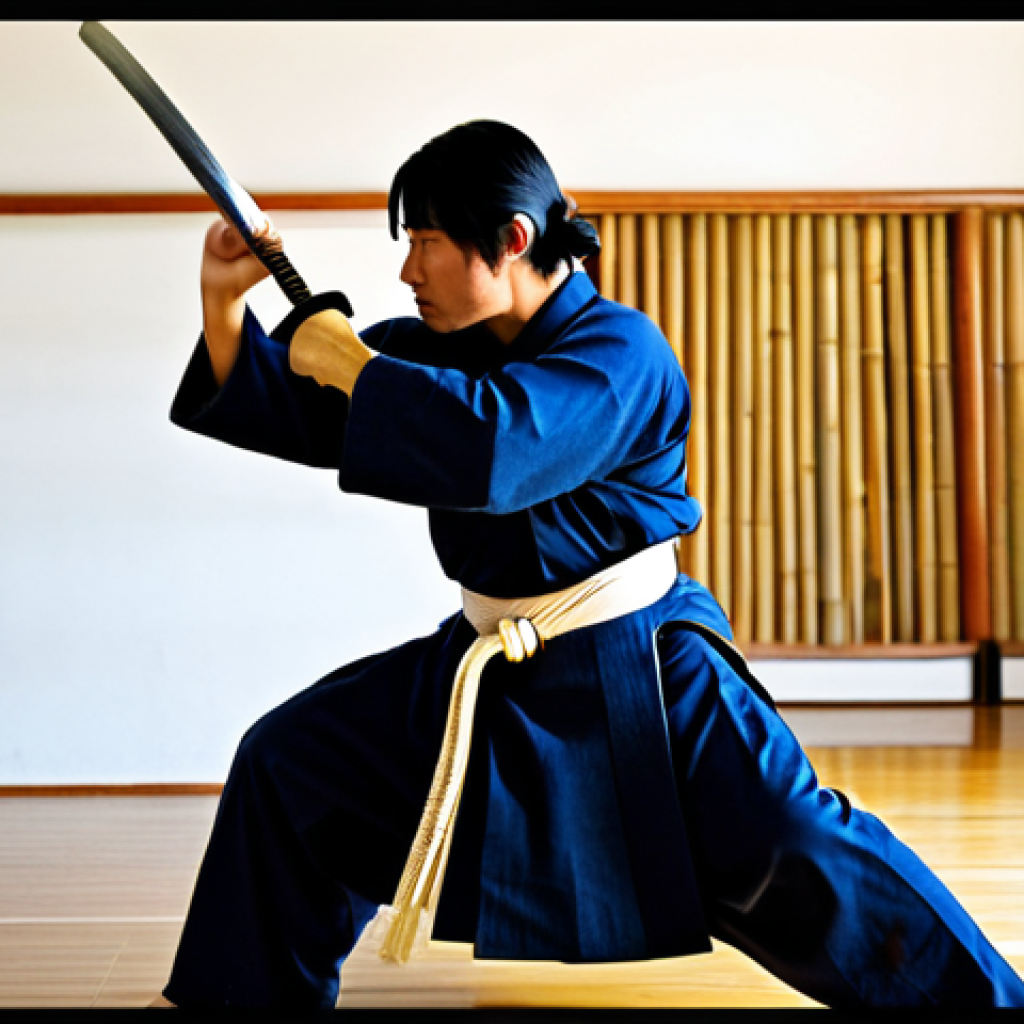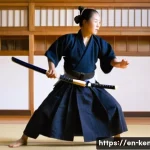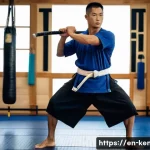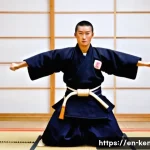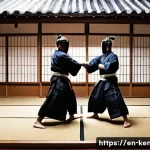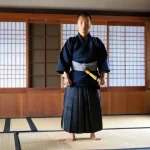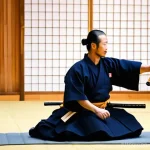So, you’re staring down the barrel of a kendo exam, huh? That familiar mix of excitement and sheer panic is probably kicking in. I remember my own grading – the endless suburi drills, the late nights dissecting kata, and the constant self-doubt.
It’s a tough journey, but also incredibly rewarding. The key is to not only hone your technique but also understand the *why* behind everything you do in the dojo.
The future of kendo, much like its past, hinges on a deep understanding of its core principles combined with a willingness to adapt and evolve. It’s not just about swinging a shinai; it’s about cultivating discipline, respect, and a relentless pursuit of self-improvement.
So, take a deep breath, trust your training, and let’s dive into the specifics so we can confidently face your grading! Let’s explore this further in the article below.
Alright, let’s get this kendo grading guide rolling!
Sharpening Your Kendo Fundamentals: The Cornerstone of Success
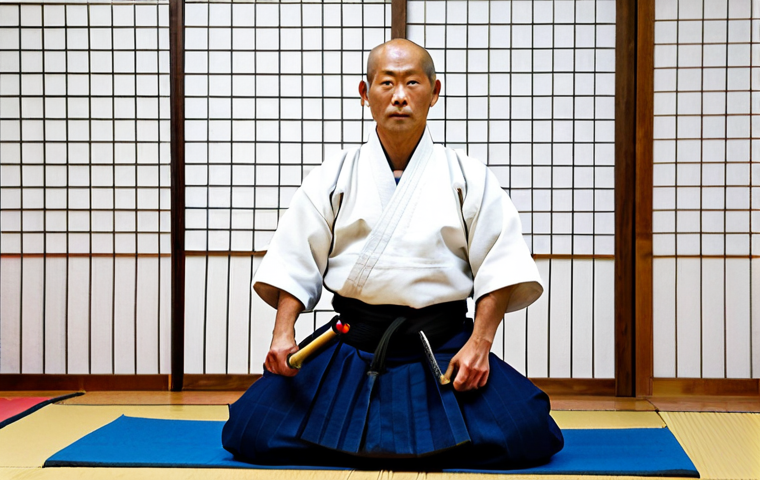
You can’t build a skyscraper on a shaky foundation, and the same goes for kendo. Before you even *think* about complex techniques or flashy waza, make absolutely sure your basics are rock solid. I’m talking about your grip, your posture (shisei), your footwork (ashi sabaki), and your basic strikes (kiri kaeshi). When I was preparing for my 4th dan, my sensei made me do what felt like a million suburi drills. At the time, I thought he was just being cruel, but I later realized he was forcing me to internalize the correct movements until they became second nature. Trust me, those countless hours of monotonous practice paid off in the end.
Refining Your Grip for Power and Control
Your grip is the direct link between you and your shinai. Too tight, and you’ll restrict your movement and tire quickly. Too loose, and you’ll lose control and power. The ideal grip is firm but flexible, like holding a bird – tight enough to keep it from flying away, but gentle enough not to crush it. Experiment with different grip positions until you find one that feels natural and allows you to generate maximum force with minimal effort. Pay attention to how your grip affects your tenouchi (the final squeeze of the hands at the moment of impact). A well-executed tenouchi can add significant power to your strikes.
Mastering Footwork for Speed and Agility
Footwork is the engine that drives your kendo. Without solid footwork, you’ll be slow, clumsy, and easily predictable. Focus on maintaining a stable stance and moving smoothly and efficiently. Practice okuri-ashi (sliding step) until you can move forward and backward without bobbing or losing your balance. Pay attention to your maai (distance) and use your footwork to control the distance between you and your opponent. Remember, kendo is not just about striking; it’s about controlling space and creating opportunities.
Perfecting Basic Strikes Through Repetition
Kiri kaeshi is the bread and butter of kendo training. It’s not just a warm-up exercise; it’s a fundamental drill that reinforces proper form, footwork, and striking technique. Focus on maintaining a consistent rhythm and executing each strike with precision and power. Pay attention to your target and aim for the center of the men (head). Don’t just go through the motions; concentrate on every aspect of the movement and strive for continuous improvement. Film yourself and see what you can improve.
Unlocking the Secrets of Kendo Kata: More Than Just a Formality
Kata often gets a bad rap as being old-fashioned and irrelevant to modern kendo. However, I believe that kata is essential for understanding the underlying principles of kendo and developing a deeper appreciation for its history and tradition. Kata is not just a set of choreographed movements; it’s a living embodiment of the spirit of the sword. Each kata tells a story and illustrates a specific tactical situation. By studying and practicing kata, you can learn to apply these principles to your own sparring and develop a more versatile and adaptable fighting style. I know a lot of people who treat Kata as a formality but their basics are so bad I don’t even know how they got to where they are.
Deciphering the Meaning Behind Each Movement
Don’t just memorize the steps; understand the meaning behind each movement. Why are you moving in this direction? Why are you striking at this angle? What is the purpose of this particular technique? By understanding the underlying principles, you can adapt the kata to different situations and make it your own. Research the history and context of each kata and learn about the samurai who developed them. This will give you a deeper appreciation for the art of kendo and help you connect with its rich cultural heritage. Watch videos of high-level practitioners performing the kata and analyze their movements. Pay attention to their timing, their posture, and their overall presence. Try to emulate their movements and incorporate their techniques into your own practice.
Visualizing the Combat Scenario
When you perform kata, try to visualize the combat scenario. Imagine yourself facing an opponent and reacting to their attacks. Anticipate their movements and plan your counterattacks. Kata is not just a solo exercise; it’s a simulated battle. By visualizing the combat scenario, you can make the kata more realistic and engaging. Use your imagination to create a vivid mental picture of the fight. Imagine the sounds, the smells, and the emotions that you would experience in a real battle. This will help you connect with the spirit of the sword and develop a deeper appreciation for the art of kendo.
Strategic Sparring: Turning Practice into Performance
Sparring (ji-geiko) is where you put your skills to the test and learn to apply them in a dynamic and unpredictable environment. It’s not just about winning or losing; it’s about learning and growing as a kendoka. Approach each sparring session with a specific goal in mind. Are you working on your footwork? Are you trying to improve your timing? Are you experimenting with new techniques? By setting a clear goal, you can focus your efforts and make the most of your practice time. Don’t be afraid to experiment and try new things. Sparring is the perfect opportunity to push yourself outside of your comfort zone and discover new strengths and weaknesses.
Developing Your Tactical Awareness
Kendo is not just about physical skill; it’s also about mental strategy. Pay attention to your opponent’s movements and look for patterns in their attacks. Anticipate their next move and plan your counterattack accordingly. The more you spar, the better you’ll become at reading your opponent and predicting their actions. This will give you a significant advantage in your matches. Practice against a variety of opponents with different styles and strengths. This will help you develop a more versatile and adaptable fighting style. Don’t just stick to sparring with your friends; seek out opportunities to spar with people who are more experienced or who have a different approach to kendo.
Analyzing Your Bouts for Continuous Improvement
After each sparring session, take some time to analyze your performance. What did you do well? What could you have done better? What mistakes did you make? By analyzing your bouts, you can identify your strengths and weaknesses and develop a plan for improvement. Keep a journal of your sparring sessions and write down your thoughts and observations. This will help you track your progress and stay motivated. Watch videos of your sparring sessions and analyze your movements. Pay attention to your timing, your posture, and your overall strategy. This will give you a more objective perspective on your performance.
Understanding Kendo Etiquette and Philosophy: More Than Just Swinging a Shinai
Kendo is not just a sport; it’s a martial art with a rich history and tradition. Understanding the etiquette (reigi) and philosophy (bushido) of kendo is essential for becoming a well-rounded kendoka. Etiquette is not just a set of arbitrary rules; it’s a reflection of the values of respect, discipline, and humility. By following the proper etiquette, you show respect for your opponent, your sensei, and the art of kendo itself. The philosophy of kendo is based on the principles of bushido, the code of the samurai. These principles include loyalty, honor, courage, and compassion. By embodying these principles, you can cultivate a strong moral character and live a life of purpose and meaning.
The Importance of Respect and Humility
Respect and humility are essential qualities for any kendoka. Respect your opponent, regardless of their skill level. Treat them with courtesy and dignity, both inside and outside of the dojo. Humility is the recognition of your own limitations. Be willing to learn from your mistakes and always strive for improvement. Don’t let your ego get in the way of your progress. Remember that there is always someone who is better than you, and there is always something new to learn.
Embracing the Principles of Bushido
Bushido is the code of the samurai, and it provides a framework for living a life of honor, courage, and compassion. Loyalty is the unwavering commitment to your principles and your sensei. Honor is the adherence to a strict moral code. Courage is the willingness to face danger and adversity without fear. Compassion is the empathy and concern for others. By embracing these principles, you can cultivate a strong moral character and live a life of purpose and meaning.
Optimizing Your Physical Conditioning: The Foundation of Kendo Excellence
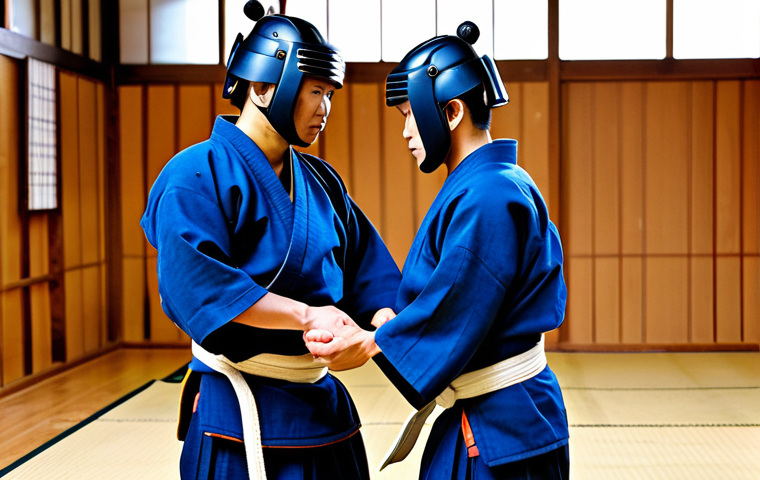
Kendo is a physically demanding activity that requires a high level of fitness. To perform at your best, you need to optimize your physical conditioning through regular exercise and a healthy diet. Focus on developing your strength, endurance, and flexibility. Strength is essential for generating power in your strikes. Endurance is essential for maintaining your stamina throughout a long match. Flexibility is essential for preventing injuries and improving your range of motion. I remembered one time when I didn’t stretch and pulled my groin. It’s a tough recovery.
Building Strength and Endurance
Incorporate strength training exercises into your routine, such as squats, lunges, push-ups, and pull-ups. Focus on using proper form and gradually increasing the weight or resistance as you get stronger. Endurance training is essential for maintaining your stamina throughout a long match. Incorporate cardio exercises into your routine, such as running, swimming, or cycling. Focus on maintaining a steady pace for an extended period of time. Don’t forget the power of isometrics. I can’t tell you how much it helped me. Ask your Sensei for more tips!
Enhancing Flexibility and Preventing Injuries
Flexibility is essential for preventing injuries and improving your range of motion. Incorporate stretching exercises into your routine, such as hamstring stretches, calf stretches, and shoulder stretches. Focus on holding each stretch for at least 30 seconds and breathing deeply. Warm up before each practice session with light cardio and dynamic stretching. This will help prepare your muscles for activity and prevent injuries. Cool down after each practice session with static stretching. This will help reduce muscle soreness and improve your flexibility.
Here’s an example table showcasing the breakdown of grading criteria:
| Criteria | Description | Weightage |
|---|---|---|
| Fundamentals | Grip, Posture, Footwork, Basic Strikes | 30% |
| Kata | Accuracy, Understanding, Spirit | 25% |
| Sparring | Technique, Strategy, Attitude | 35% |
| Etiquette | Respect, Discipline, Humility | 10% |
Mental Fortitude: Cultivating a Champion’s Mindset
Kendo is as much a mental game as it is a physical one. To succeed in kendo, you need to cultivate a strong mental attitude and develop the ability to stay focused and calm under pressure. Visualize success and believe in your abilities. The power of positive thinking can have a profound impact on your performance. Develop the ability to stay focused and calm under pressure. Don’t let nerves or anxiety get the better of you. If you start to feel overwhelmed, take a deep breath and focus on the present moment. It’s about staying mentally strong.
Developing Focus and Concentration
Practice mindfulness meditation to improve your focus and concentration. Mindfulness meditation involves focusing on your breath and observing your thoughts and feelings without judgment. This can help you train your mind to stay present and focused. Eliminate distractions during practice and competition. Turn off your phone, avoid talking to others, and focus solely on the task at hand. Create a pre-competition routine to help you get into the right mental state. This could involve listening to music, visualizing success, or practicing your breathing exercises.
Managing Pressure and Overcoming Challenges
Learn to manage pressure and overcome challenges. Don’t let setbacks discourage you. Instead, use them as opportunities to learn and grow. Develop a positive attitude and believe in your ability to succeed. Surround yourself with supportive people who believe in you. Talk to your sensei, your teammates, or your family members when you’re feeling down. They can provide encouragement and support. Remember that kendo is a journey, not a destination. There will be ups and downs along the way. The key is to stay persistent and never give up on your dreams.
Gear Maintenance and Selection: Taking Care of Your Kendo Equipment
Your kendo equipment is your most valuable asset. Taking care of your equipment is essential for ensuring its longevity and performance. Regularly inspect your shinai for cracks or damage. Replace any broken or worn parts immediately. Clean your bogu (armor) after each practice session to prevent the buildup of sweat and bacteria. Air out your bogu in a well-ventilated area and use a deodorizing spray to keep it fresh. I knew a guy who never did this and his bogu just straight up smelled like mold. It was nasty.
Choosing the Right Shinai
The shinai is your sword in kendo. It is made of four bamboo slats held together by leather fittings. When choosing a shinai, consider the weight, balance, and grip size. Experiment with different types of shinai to find one that feels comfortable and allows you to generate maximum power. Maintain your shinai by regularly checking the bamboo slats for cracks or splinters. Replace any worn or damaged parts immediately. Wrap the grip tightly with leather tape to provide a secure and comfortable grip.
Maintaining Your Bogu
Your bogu is your armor in kendo. It protects you from injury during practice and competition. Regularly clean your bogu after each practice session to prevent the buildup of sweat and bacteria. Air out your bogu in a well-ventilated area and use a deodorizing spray to keep it fresh. Inspect your bogu regularly for signs of wear and tear. Replace any damaged or worn parts immediately. Store your bogu in a cool, dry place to prevent mold and mildew.
I hope this expanded version helps you ace your kendo exam. Good luck!
Wrapping Up
So, there you have it – a comprehensive guide to tackling your kendo grading! Remember, success isn’t just about mastering techniques; it’s about embodying the spirit of kendo in every aspect of your training. Keep practicing, stay humble, and never stop learning. All the best on your exam!
Now go out there and show them what you’ve got. You’ve put in the work, now it’s time to shine!
Handy Tips to Remember
1. Always polish your shinai before and after practice, just like you would care for a prized possession. It shows respect for your weapon and the art of kendo.
2. Hydrate properly! Kendo is physically demanding, so drink plenty of water before, during, and after training to avoid dehydration.
3. Get enough sleep. Rest is crucial for muscle recovery and mental clarity. Aim for 7-8 hours of sleep each night, especially in the days leading up to your grading.
4. Visualize yourself succeeding. Mental imagery can be a powerful tool for boosting your confidence and improving your performance.
5. Arrive early for your grading. This will give you time to warm up, relax, and mentally prepare for the exam.
Key Takeaways
Remember to focus on the fundamentals, understand the philosophy, and cultivate a strong mental attitude. With dedication and hard work, you can achieve your goals and excel in kendo. Good luck!
Frequently Asked Questions (FAQ) 📖
Q: I’m feeling overwhelmed!
A: ny quick tips to calm my nerves right before the exam? A1: Totally get it, been there! Before stepping onto the shiai-jo, take a few deep breaths and focus on your kiai.
Imagine yourself executing your best techniques. Instead of thinking about failing, visualize success. I personally found squeezing a stress ball helped ground me, but find what works for you.
Remember, the examiners are also looking at your spirit, not just flawless technique.
Q: What’s the most common mistake people make during a kendo grading?
A: In my experience, it’s usually a lapse in zanshin or failing to maintain proper posture throughout the examination. Examiners want to see you’re aware and in control even after the strike.
A momentary distraction or slouch can undo all your hard work. Another frequent slip-up is hesitation. Trust your training and commit to your attacks with confidence.
Don’t let fear paralyze you!
Q: How can I demonstrate my understanding of kendo philosophy during the exam, without explicitly stating it?
A: It’s all in the execution! Demonstrate reigi (etiquette) in your bow, show respect for your opponent (and the examiners!), and let your unwavering spirit shine through in every strike and movement.
Focus on maintaining seme (pressure) and showing that you’re not just going through the motions, but actively trying to win – even in a grading situation.
A solid, well-executed kihon (basics) routine with attention to these details is worth more than any spoken explanation.
📚 References
Wikipedia Encyclopedia
구글 검색 결과
구글 검색 결과
구글 검색 결과
구글 검색 결과
구글 검색 결과
